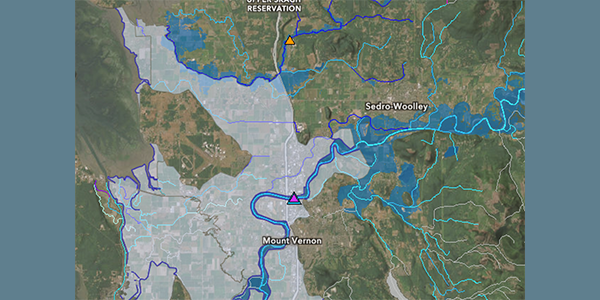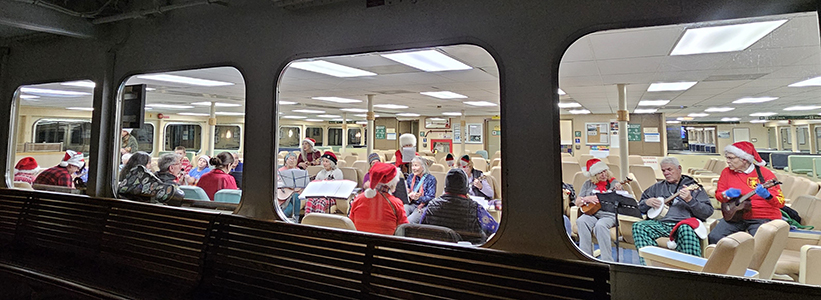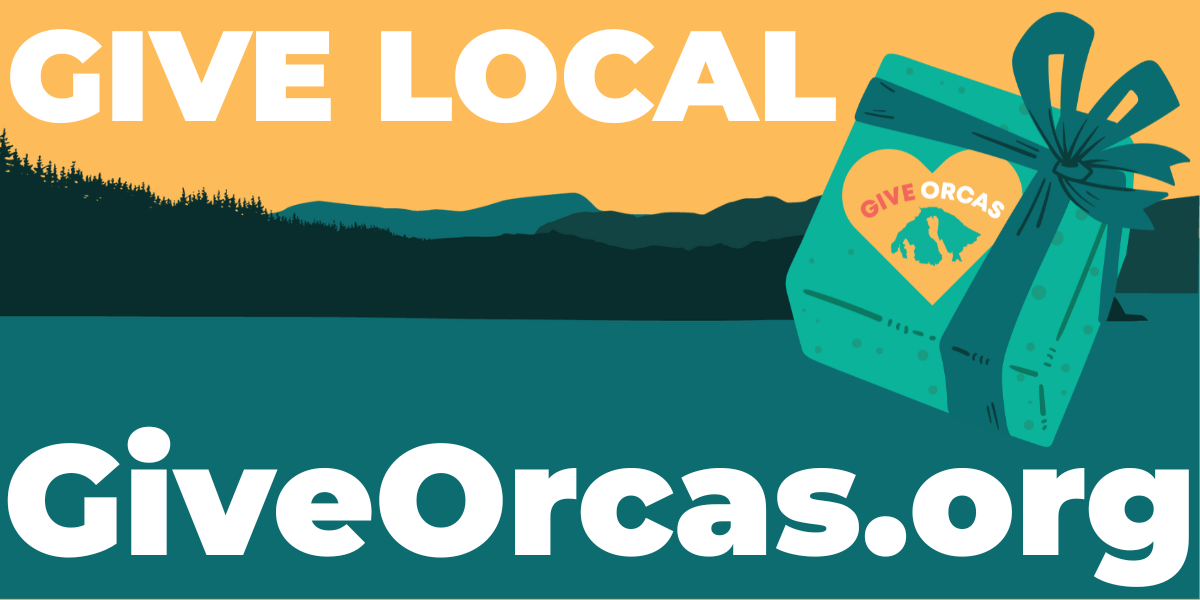The Bailer Hill Microgrid project on San Juan Island is a future Community Solar and battery storage site
||| FROM KRISTA BOUCHEY for ORCAS POWER & LIGHT COOPERATIVE |||
In “Part 1: Why Local, Renewable Power Generation,” OPALCO outlined the critical point we are at as an essential service that is facing grave uncertainties with the future power supply in the Northwest region. The increasing demand is not keeping up with the limited supply. And now more than ever, looking at reliable, renewable carbon free solutions is critical to avoid potential blackouts.
In “Part 2: Why the Bailer Hill Microgrid”, OPALCO described why that site was chosen and the benefits of pairing solar power arrays with farming. OPALCO sees projects like the Bailer Hill Microgrid as critical to the energy future of the islands.
OPALCO has a long history as a cooperative serving our island communities, including moving from small diesel generators for our electrical needs to installing submarine cables to deliver power. Our island communities are at a point where we need to rally together and figure out our future energy supply. It’s time to start thinking differently than we have before and work together to find solutions to these big issues to ensure these essential services are accessible and reliable.
OPALCO has been working for four years to site, plan, permit, and construct the Bailer Hill Microgrid. The process started with a preliminary application which did not flag any unusual issues. OPALCO worked for the next 18 months to design, study, and engineer the project to submit for a ConditionalUse Permit for this site.
In July of 2023, OPALCO submitted the full permit application. Since that time, the San Juan County Department of Community Development has stalled and made additional information requests, often with no code citations to back up their requests, or arbitrarily discounting expert reviews. OPALCO had two hearings scheduled and then cancelled with multiple promises of dates in the nine months between the hearing dates. Due to unforeseen circumstances within the Department of Community Development, the project was turned over to a third-party contractor who had to start from scratch to review the extensive materials.
In December 2024, 12 days before the scheduled hearing, OPALCO learned that yet again the hearing had been delayed and a request for additional information was made a requirement. In the preliminary application, OPALCO submitted a “Critical Areas Ordinance Exemption” report prepared by a qualified wetland professional. Based on a site visit, the report concluded that the mapped wetland on the project site was an artificially created farm pond in a non-wetland area and therefore exempt from regulation under the County’s Critical Areas Ordinance. The County accepted this report.
OPALCO is confident in its analysis that there is not a regulated wetland on the property. Subsequently, OPALCO provided another report prepared by a licensed hydrogeologist, which confirmed that the project site contains an exempt, artificially constructed farm pond, and that the source of hydrology on the project site is the County’s own stormwater overflow via ditches that run onto the property.
The San Juan County Code states that artificial farm ponds, drainage ditches, and similar stormwater facilities are not defined as regulated wetlands. OPALCO’s reports are supported by multiple site visits and on-site data collection by qualified professionals, a detailed analysis of historical data spanning decades, current on-the-ground field investigations, and the application of wetland manual definitions and methodologies.
OPALCO is ready to perform the additional requirement made by San Juan County to further investigate any needed wetland delineation but this will take many more months to accomplish. With these constant delays, it has become unfeasible for OPALCO to keep moving forward with the project.
After three extensions, the Department of Commerce grant may not be extended for a fourth time,which could be a $1M loss of funds that would have helped to reduce the energy burden of the low-income community.
OPALCO is not giving up on local, renewable projects, but the team is hitting pause for this project. OPALCO is looking to the community to take the time to learn the ins and outs of these issues and help take steps to get more renewable energy projects implemented throughout the islands. OPALCO fully supports protecting conservation, natural, and jurisdictional wetlands. We will need to address the various land-use designations to protect the most important parts of our islands and open up other areas to ensure we can site these kinds of projects close to where people live. Electricity is an essential service that our community relies on for all aspects of our lives. Ensuring that the community has a reliable energy grid into the future will take a big effort from all of us as we work to find solutions.
Throughout 2025, the OPALCO team will continue communicating on these issues and looking for feedback from co-op members. OPALCO will also be analyzing the electricity rates to ensure a fair and responsible way to bill members. OPALCO will continue working with San Juan County to change land use designations to make sure siting and installing renewable energy projects can be done in a reasonable and timely manner. The Co-op team has reached out to the County to find a solution to site an alternative location and save the $1M solar grant aimed at benefitting low-income residents – despite current permitting challenges, OPALCO is hopeful a reasonable solution can be accomplished.
OPALCO will be doing a survey later in 2025 to get feedback from co-op members. Please get involved, learn more, and take the survey. We want to hear from you!
Read Part 1: Why Local Renewable Energy?
Read Part 2: Why the Bailer Hill Location?
Find more detailed information and data sources at www.opalco.com.
Orcas Power & Light Cooperative (OPALCO) is our member-owned cooperative electric utility, serving more than 11,400 members on 20 islands in San Juan County. OPALCO provides electricity that is 97% greenhouse-gas free and is generated predominantly by hydroelectric plants. OPALCO was founded in 1937.
**If you are reading theOrcasonian for free, thank your fellow islanders. If you would like to support theOrcasonian CLICK HERE to set your modestly-priced, voluntary subscription. Otherwise, no worries; we’re happy to share with you.**









Thank you Opalco for your perseverance and leadership on our collective behalf. Common sense, solid choices, rational and prudent public judgement on this project is now required. The end result of uncalled for delay tactics by a few, and frankly dysfunction at the government level , will drive the cost of living here ever higher and force, especially working people and their families, to leave and find less expensive living options elsewhere. Or, perhaps, they and everyone else, will elect to use wood heat as an option? What will you do? What is easiest and prudent then? When it’s cold and the sun will not shine? When the farm valleys are clogged with winter inversion smoke from “alternatives” do we wish we had made better choices for farm land “back then”?
The county council and the San Juan County Department of Community Development should respond to this article. The people of San Juan County have a right to know the reason, if the County failed to properly address this permit.
OPALCO has instituted a double-dip fee program for residential energy production facilities. This means families who produce solar power for the OPALCO grid are charged fees for helping solve the San Juan County energy problem that OPALCO says (rightly) is so critical.
Families who spend their own money–not your money–to build and maintain solar generators are paid less per kWh–for the power they produce–than the mainland guys on the other side of the cable. On top of paying local residential solar producers less for producing power, OPALCO also charges residential solar producers a fee for every kWh they produce.
OPALCO green-washes its short-sighted policies. Or to put it another way: OPALCO is full of shit.
I agree with Marsha and John that we must investigate the accumulated delays in permitting the Bailer Hill agriculture + solar + energy storage project.
I am a huge environmentalist and past president of the board of directors of the Friends of the San Juans. I care deeply about nature, and I want to lessen our impacts on our planet. My husband and I implemented all the recommended energy conservation measures for our home, including more insulation, thermal windows, heat pumps for both space heating/cooling, and a heat pump water heater. We installed solar panels + battery storage. Still this has not been enough to cover the winter electricity demands. Our house roof has only one section over the garage that faces the proper direction for solar. We do have an electric vehicle that increases the electricity demand.
All these investments are what is needed to help address the transition away from planet-disrupting fossil fuels.
Yet they have not been enough to make ours a net-zero home.
And many people could not afford these investments or they are renters.
Or their home may not have a roof that is suitable for solar.
OPALCO has (had?) a grant to help pay for the Bailer Hill Project.
This grant would have reduced renewable electricity costs for lower income people in San Juan County.
But maybe the permitting delays have scuttled this grant?
Opponents of Bailer Hill say that rooftop solar and solar over impervious surfaces, such as parking lots should be adequate. But my personal experiences and calculations by OPALCO show that covering all available impervious surfaces in addition to all properly situated roof tops would still not produce enough electricity to get us through the darker and colder winter months.
We need community solar plus storage.
Some agricultural lands should be suitable for solar + storage.
From the information that I have, Bailer Hill is such a suitable site.
I regulations that would allow interested farmers to work with OPALCO and our county’s permitting system in a timely manner. Some agricultural lands will not be suitable, but I strongly feel that we must not rule out all agricultural lands from the possibility of implementing agri-solar.
Our world is experiencing more and more frequent extreme weather disasters. I know people who lost their homes in the Los Angeles Firestorms. We are not immune from extreme weather in the San Juan Islands. I remember the 2021 Heat Dome acutely. Our heat pump was broken and the temperature outside was 105 to 106 F for many days. Plants and wild animals cannot seek refuge in air-conditioned spaces. And many people cannot afford the air conditioning that an investment in a heat pump provides.
We could experience hot, dry, windy days, called Red Flag Warning Days, in the future. There could be devastating firestorms in our future if we do not act to rapidly transition away from fossil fuels.
I do not think that it is ok to act as NIMBYS (Not-In-My-Backyard) and expect other counties to make compromises for our benefit. We are all in this together: people, our companion and wild animals, plants that we grow for food and for beauty and wild plants…on and on in the symphony of life on Earth.